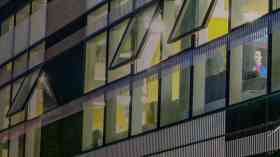Action Mats create resources for primary and early years children focussing on movement skills and active learning.
Supplier Focus
Latest Supplier News
Borg & Overström is a UK manufacturer of premium drinking water solutions. For over 20 years Borg & Overström has developed sustainable, bottle-less, hygienic, drinking water dispensers with the aim to provide exceptional, safe, self-service drinking water into schools, universities, workplaces and communal spaces.

 The tragic case of a fire in Manchester in which a firefighter died highlights once again the dangers associated with fire in the 21st Century. Within the educational community we need to be aware that blazes are still occurring in school premises at a rate of twenty schools per week.
The tragic case of a fire in Manchester in which a firefighter died highlights once again the dangers associated with fire in the 21st Century. Within the educational community we need to be aware that blazes are still occurring in school premises at a rate of twenty schools per week.








